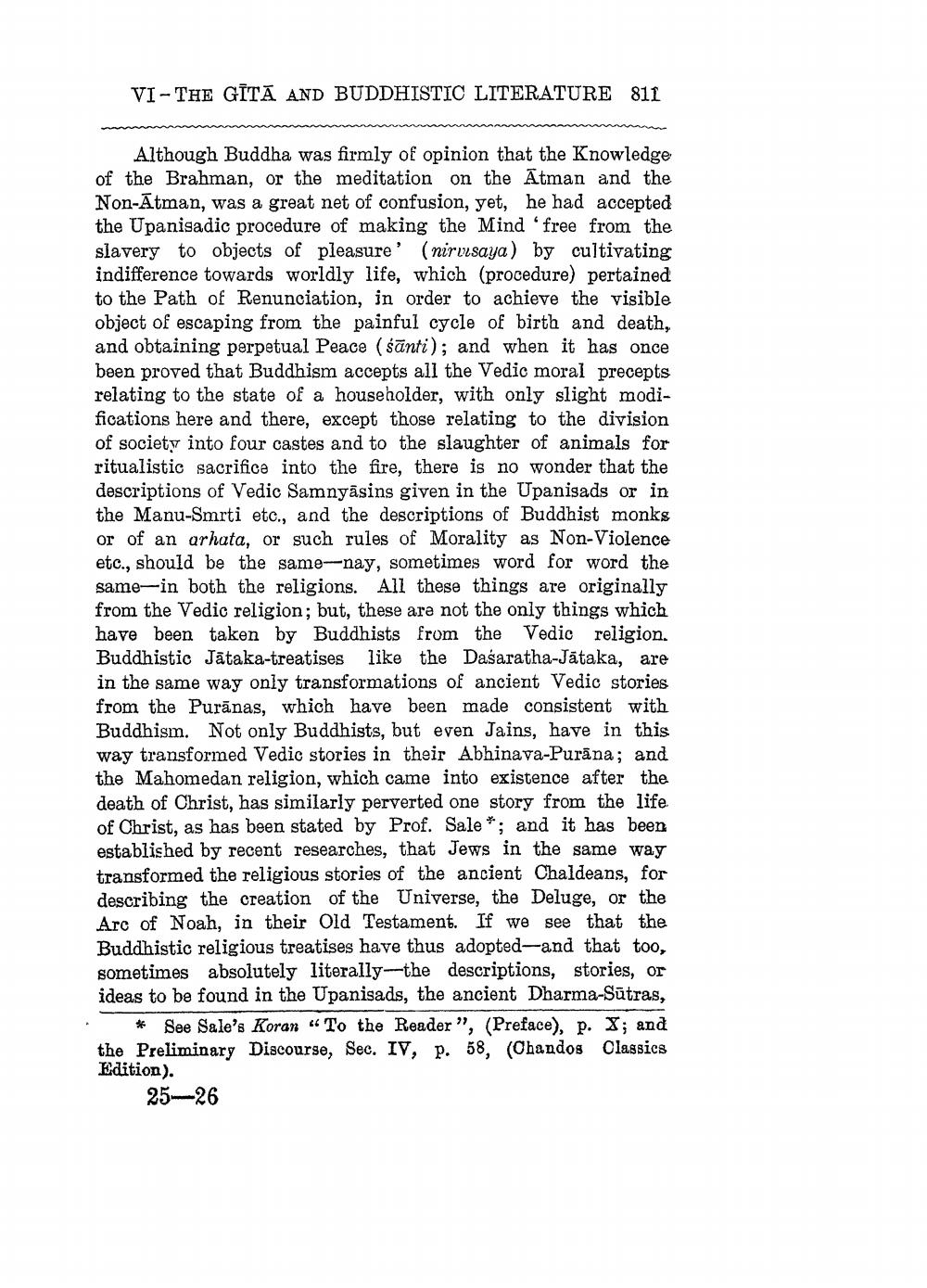________________
VI-THE GĪTĀ AND BUDDHISTIC LITERATURE 811
Although Buddha was firmly of opinion that the Knowledge of the Brahman, or the meditation on the Atman and the Non-Ātman, was a great net of confusion, yet, he had accepted the Upanisadic procedure of making the Mind 'free from the slavery to objects of pleasure' (nirvisaya) by cultivating indifference towards worldly life, which (procedure) pertained to the Path of Renunciation, in order to achieve the visible object of escaping from the painful cycle of birth and death, and obtaining perpetual Peace (śānti); and when it has once been proved that Buddhism accepts all the Vedic moral precepts relating to the state of a householder, with only slight modifications here and there, except those relating to the division of society into four castes and to the slaughter of animals for ritualistic sacrifice into the fire, there is no wonder that the descriptions of Vedic Samnyâsins given in the Upanisads or in the Manu-Smrti etc., and the descriptions of Buddhist monks or of an arhata, or such rules of Morality as Non-Violence etc., should be the same-nay, sometimes word for word the same--in both the religions. All these things are originally from the Vedic religion; but, these are not the only things which have been taken by Buddhists from the Vedic religion. Buddhistic Jātaka-treatises like the Dasaratha-Jätaka, are in the same way only transformations of ancient Vedic stories from the Purānas, which have been made consistent with Buddhism. Not only Buddhists, but even Jains, have in this way transformed Vedic stories in their Abhinava-Purāna; and the Mahomedan religion, which came into existence after the death of Christ, has similarly perverted one story from the life of Christ, as has been stated by Prof. Sale*; and it has been established by recent researches, that Jews in the same way transformed the religious stories of the ancient Chaldeans, for describing the creation of the Universe, the Deluge, or the Arc of Noah, in their Old Testament. If we see that the Buddhistic religious treatises have thus adopted-and that too, sometimes absolutely literally--the descriptions, stories, or ideas to be found in the Upanisads, the ancient Dharma-Sūtras,
* See Sale's Koran " To the Reader", (Preface), p. X; and the Preliminary Discourse, Sec. IV, p. 58, (Chandos Classics Edition).
25-26




